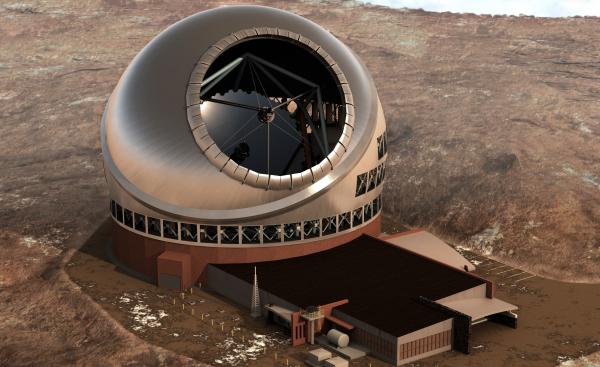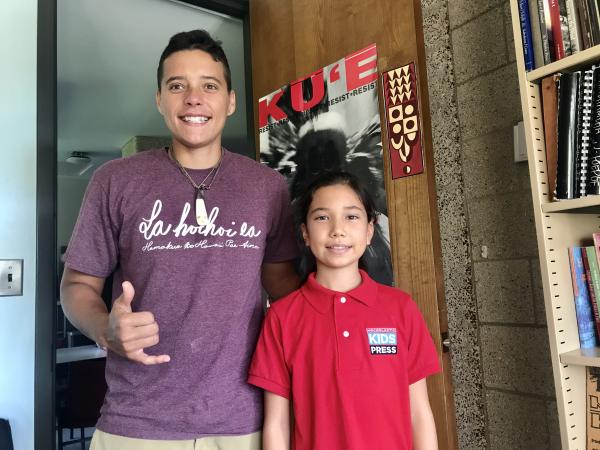KID REPORTERS’ NOTEBOOK
A Controversial Telescope in Hawaii


Lucia with Manatua Lave, 10, of Honolulu, Hawaii. Manatua is opposed to building an observatory on the sacred island of Mauna Kea.
“You can see Mauna Kea as an altar recognizing the sacredness of the Hawaiian gods,” says Jamaica Osorio, a professor at the University of Hawaii at Mānoa. “That place connects us back to our ancestors and the story of how we came to be as Hawaiians.”
Mauna Kea is an inactive volcano on the island of Hawaii. It was formed about a million years ago and is considered to be sacred by native Hawaiians. That is why a plan to build a large telescope, the Thirty Meter Telescope (TMT), on the side of the mountain has sparked widespread protest.
THE MOST “ADVANCED” TELESCOPE
The proposed international observatory, which has been in the planning stages for years, was designed by scientists at the University of California and the California Institute of Technology. It would include “the most advanced and capable telescope on earth,” says TMT spokesman Scott Ishikawa.
The telescope would enable astronomers to do research that isn’t possible with the current instruments available, including smaller telescopes already on the mountain. Scientists estimate that the TMT would see 10 to 100 times farther in the sky than other telescopes, allowing them to study some of the oldest objects in the universe.

An artist’s rendering of the TMT Observatory
BAD FOR BUSINESS?
In 2014, Hawaiians and other activists protested construction of the observatory, blockading the roadway. After several more protests and legal challenges, Governor David Ige finally permitted construction to resume in July.
But the protests continue. Manatua Lave, 10, of Honolulu, has participated in some of them. “Sacred land should be left alone,” she says.
Osorio also participates in protests, routinely flying from Mānoa to the island where Mauna Kea is located. “Even if you don’t believe that Mauna Kea is sacred,” she says, “the TMT isn’t a good project for Hawaii. It’s bad business for the whole state.”
Osorio is concerned about environmental damage in and around the observatory. But several business leaders argue that the TMT would bring increased opportunities.
“The TMT is important to Hawaii,” Ishikawa argues. “It brings jobs, and we can educate kids through STEM programs.”

Lucia with Jamaica Osorio, a professor at the University of Hawaii
“THE BEST PLACE”
Ishikawa says that scientists chose Mauna Kea as the location for the observatory because “it’s the best place in the world to study the universe.” The mountain has the weather characteristics needed to produce the best telescopic images.
Osorio and Ishikawa do agree that kids should care about the fate of the observatory. “Children are the people who inherit this Earth,” Osorio says. “The decisions we adults make are going to impact them more than anyone else.”
What do you think? Will the telescope benefit or harm the island of Hawaii?
